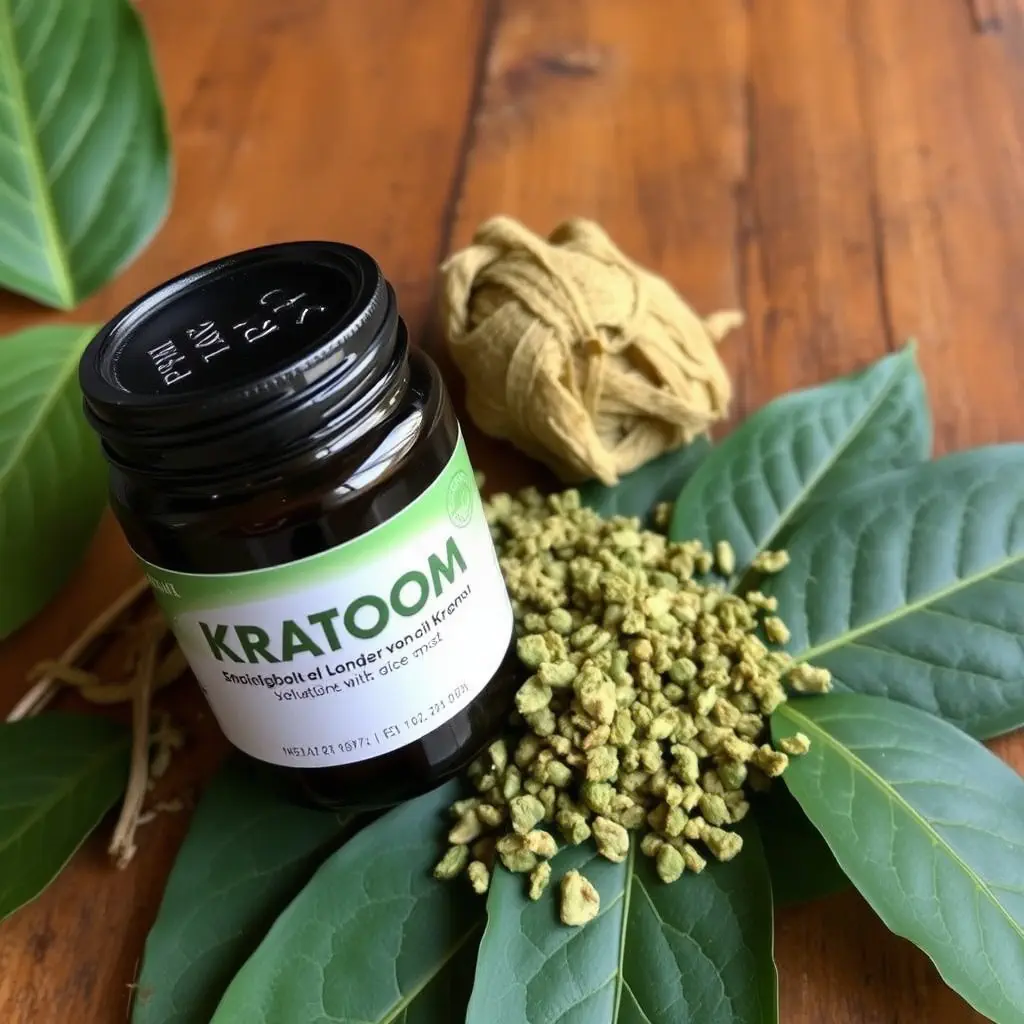The use of kratom for athletic performance and recovery is gaining attention due to its potential benefits. Kratom, derived from the Mitragyna speciosa tree, contains alkaloids like mitragynine and 7-hydroxymitragynine that may enhance stamina, reduce pain, and elevate mood. For athletes, careful consideration of dosage and strain selection is crucial; Maeng Da strains can boost energy and performance, while Bali strains might aid in recovery with their calming effects. Starting with one to two kratom capsules, monitoring individual responses, and adjusting accordingly are key for safety and efficacy. Due to the sensitivity of kratom's effects and variability in personal tolerance, a moderate dose ranges from 4 to 8 grams for experienced users, but beginners should start with a lower dose and gradually increase as needed. It's essential to consult healthcare professionals before incorporating kratom into any fitness routine and to comply with local laws regarding its use. To maintain peak performance, regular assessment of one's health status is necessary when using kratom, alongside proper hydration, nutrition, and exercise. Always remember that personalization is vital for a safe and effective kratom regimen.
Embarking on a journey to achieve peak physical conditioning can be both exhilarating and demanding. Integrating kratom into your regimen for enhanced athletic performance and recovery is gaining traction in fitness circles, but understanding its nuances is key. This article delves into the intricacies of optimizing athletic performance and recovery with kratom, elucidating dosage and strain selection to maximize benefits. We explore the scientific evidence supporting kratom’s role in physical conditioning and endurance, offering a comprehensive guide on crafting an effective and safe kratom regimen tailored to your individual needs. Whether you’re curious about how many kratom capsules to take or seeking to enhance your workout routine, this article will serve as a valuable resource for athletes and fitness enthusiasts alike.
- Optimizing Athletic Performance and Recovery with Kratom: Understanding Dosage and Strain Selection
- The Science Behind Kratom's Impact on Physical Conditioning and Endurance
- Crafting Your Kratom Regimen for Peak Physical Condition: A Step-by-Step Guide to Safe and Effective Usage
Optimizing Athletic Performance and Recovery with Kratom: Understanding Dosage and Strain Selection

Mitigating athletic exertion and facilitating swift recovery are paramount for any athlete striving for peak performance. Kratom, a natural alkaloid found in the leaves of the Mitragyna speciosa tree, has garnered attention within the athletic community for its potential benefits in this realm. To optimize athletic performance and promote efficient recovery, it is crucial to navigate both dosage and strain selection with precision.
When considering how many kratom capsules to take, athletes should approach kratom with caution and individualization. The optimal dosage can vary widely based on factors such as body weight, tolerance, and the specific effects desired. Generally, a moderate starting point might be one to two kratom capsules, taken orally, assessing the effects before considering an increase. It’s important to note that kratom’s effects can be dose-dependent and can influence both energy levels and pain perception. Strain selection also plays a significant role; for instance, strains like Maeng Da are known for their invigorating and energizing properties, which may benefit performance, while strains such as Bali are often favored for their soothing effects, potentially aiding in recovery processes. Consistency and careful tracking of one’s personal response to kratom can help refine the optimal dosage and strain combination for each athlete’s unique needs. Always prioritize adhering to local laws and regulations regarding kratom use, and consult with healthcare professionals before integrating kratom into any athletic regimen.
The Science Behind Kratom's Impact on Physical Conditioning and Endurance

Kratom, a tropical evergreen tree native to Southeast Asia, has garnered attention in various health and wellness circles for its potential impact on physical conditioning and endurance. The effects of kratom are attributed to its active alkaloids, mitragynine and 7-hydroxymitragynine, which interact with the body’s opioid receptors. These interactions can lead to a range of physiological responses, including enhanced stamina, pain relief, and improved mood—all of which can be beneficial for athletes and individuals seeking to enhance their physical performance.
Research suggests that kratom may increase energy levels and reduce the perception of fatigue, enabling users to push through intense workouts or endurance activities with more vigor. However, it’s crucial to approach kratom with caution due to its potency; the appropriate dosage is a key factor in achieving these benefits without adverse effects. Generally, the number of kratom capsules one should take can vary based on tolerance, physiology, and the specific strain used. As a general guideline, a moderate dose for experienced users typically ranges from 4 to 8 grams of dried leaf material or its equivalent in capsule form. It’s essential to start with a lower dosage and gradually increase it while monitoring one’s response. Additionally, because individual sensitivity to kratom can differ significantly, users should consult with a healthcare provider to determine the most suitable dosage for their conditioning regimen, ensuring safe and effective use of kratom as part of their overall fitness strategy.
Crafting Your Kratom Regimen for Peak Physical Condition: A Step-by-Step Guide to Safe and Effective Usage

Crafting an effective Kratom regimen for peak physical condition requires careful consideration and adherence to safe usage practices. The first step in establishing your Kratom dosage is understanding how many kratom capsules to take, as this can vary significantly from one individual to another based on factors such as body weight, tolerance, and the desired effects. It’s generally recommended to start with a low dose to gauge your sensitivity to the substance. Typically, a beginner’s dose might range from 1 to 3 grams of Kratom powder, which can be encapsulated depending on preference. This initial step helps prevent adverse reactions and allows for personalization of your regimen.
Once you have determined a starting point, monitor the effects carefully. Kratom’s influence on energy levels, pain sensation, and mood enhancement can be profound, but its impact is also highly individual. Gradually increase your intake, if necessary, while keeping in mind that most users find optimal benefits within the range of 4 to 8 grams for moderate effects, and up to 12 grams for stronger impacts. Always wait a minimum of four to six hours before adjusting your dosage, as the onset and duration of Kratom’s effects can vary. Additionally, it’s crucial to maintain hydration, as Kratom can dehydrate users, and to ensure that your regimen complements a balanced diet and regular exercise routine for optimal physical conditioning. Regular assessments of your well-being are essential to prevent overuse and to maintain the health benefits associated with Kratom consumption. Always prioritize safe usage practices and consult with a healthcare professional before integrating Kratom into your fitness regimen, especially if you have pre-existing health conditions or take other medications.
In conclusion, the integration of kratom into an athletic regimen can be a nuanced yet potent approach to optimizing performance and facilitating effective recovery. The key to harnessing its benefits lies in understanding dosage and selecting the appropriate strain, as detailed in “Optimizing Athletic Performance and Recovery with Kratom: Understanding Dosage and Strain Selection.” Scientific research elucidates how specific alkaloids within kratom can enhance endurance and physical conditioning, a topic thoroughly explored in “The Science Behind Kratom’s Impact on Physical Conditioning and Endurance.” For those interested in the practical application of this knowledge, “Crafting Your Kratom Regimen for Peak Physical Condition: A Step-by-Step Guide to Safe and Effective Usage” offers a clear framework for implementing kratom into one’s training routine. It is crucial to approach kratom use with caution, particularly regarding how many kratom capsules to take, as individual sensitivities vary greatly. Adhering to these guidelines can help athletes achieve their peak physical condition while leveraging the potential ergogenic properties of kratom responsibly.






